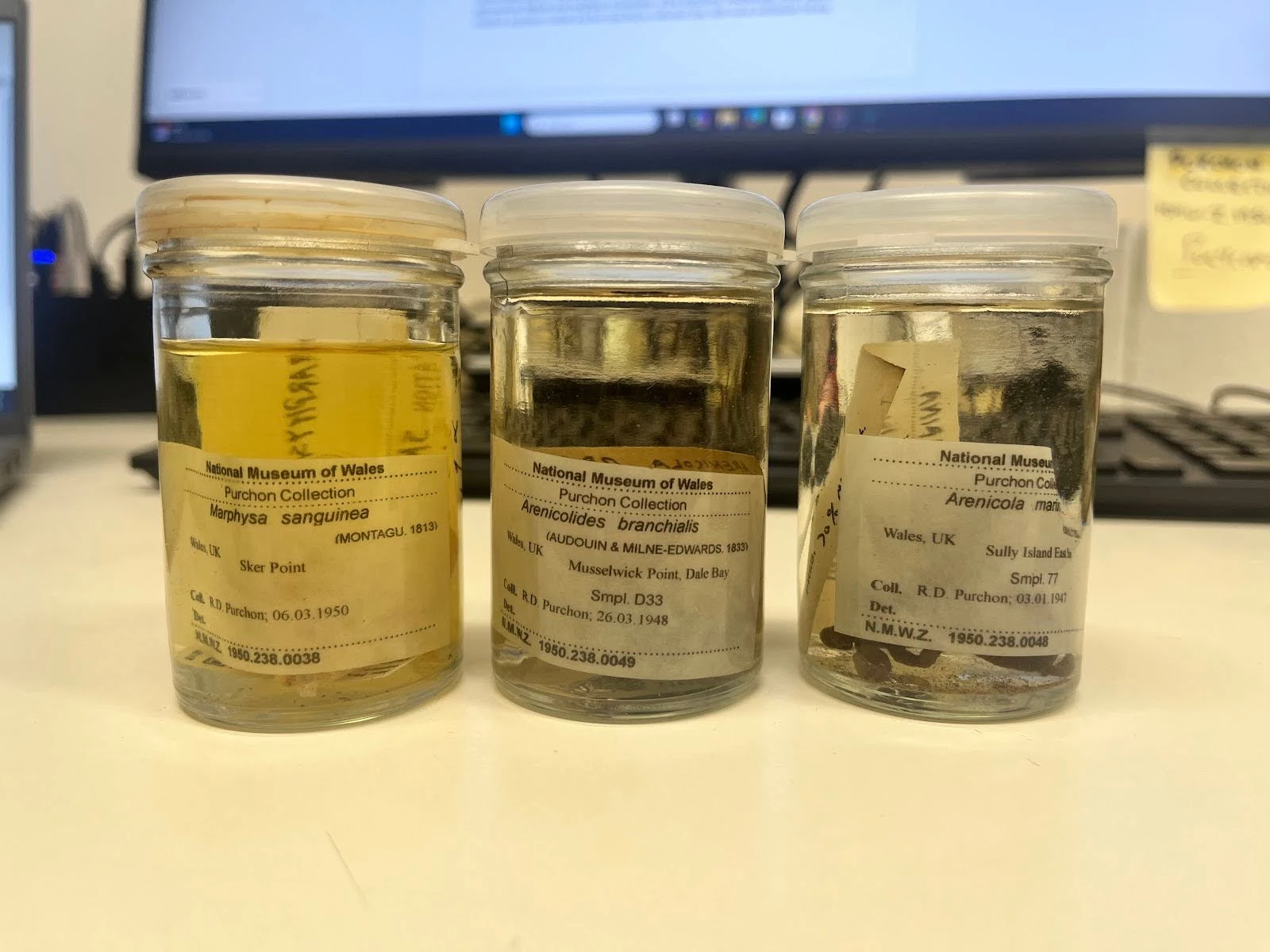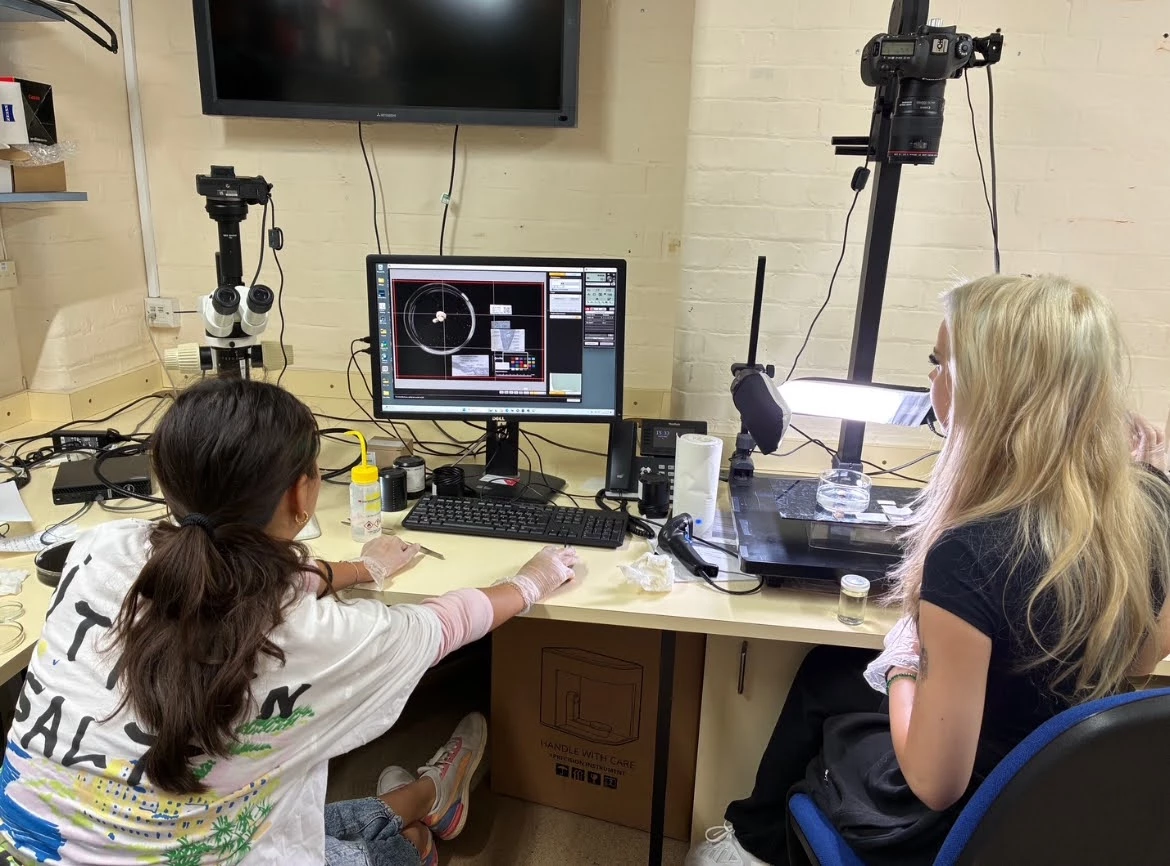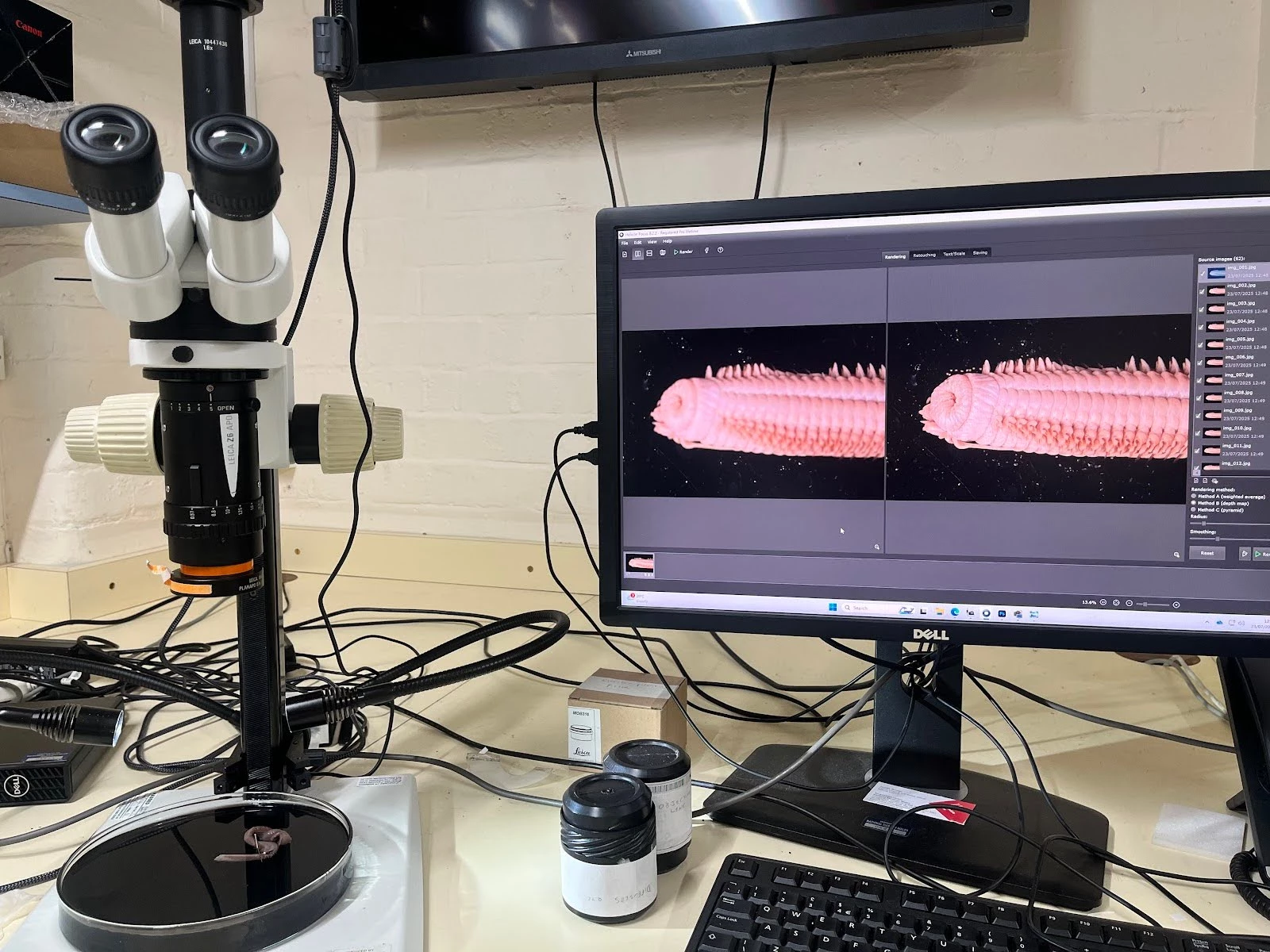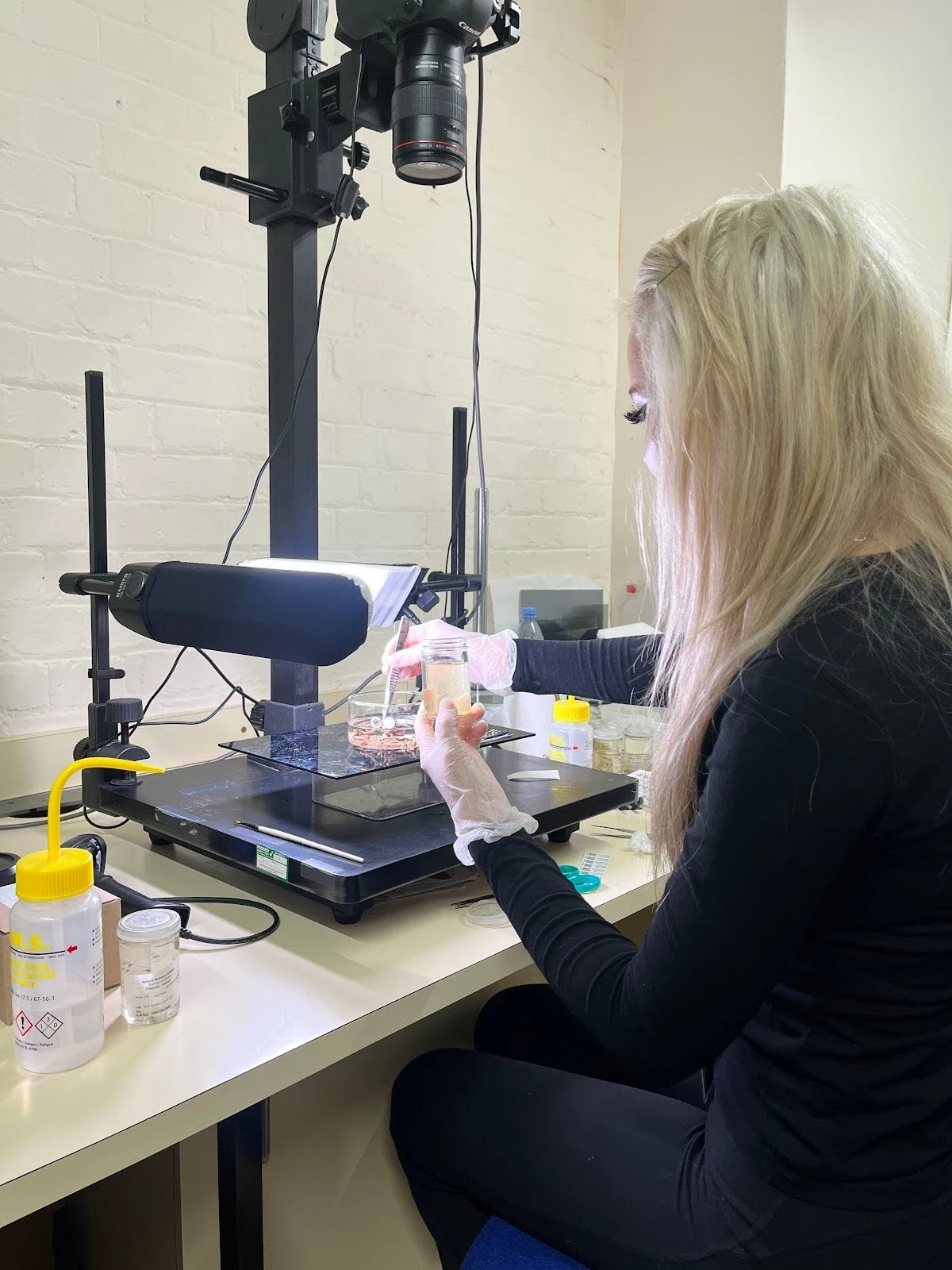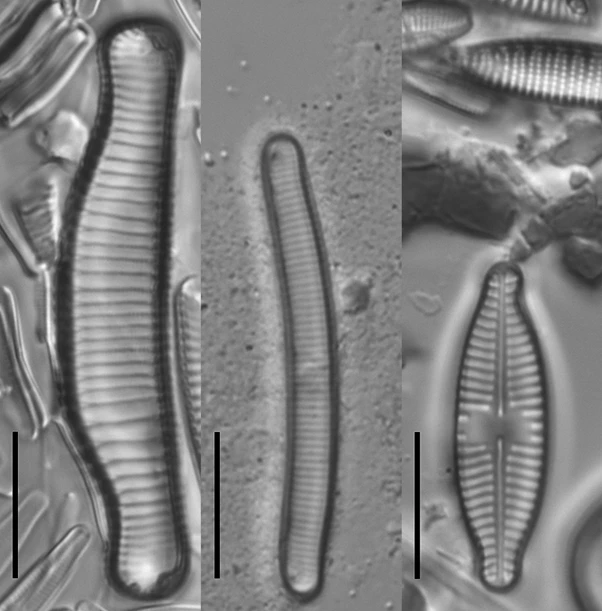Polychaete Placement Party - Tales from student placements working on marine bristle worms
, 26 August 2025
Mayu Seguchi
Hi my name is Mayu Seguchi and I have just graduated with a BSc (Hons) in International Wildlife Biology from the University of South Wales. The most commonly asked question I’ve received since moving away from my small town in Michigan is “Why Wales”? My automatic response has always been to praise my university course for the extensive amount of travelling embedded into the curriculum. I recount stories about my experiences - like how an African elephant herd mock charged us in South Africa, or swimming in this gorgeous river in the Chiquibul Rainforest while rainbow marques flew overhead in Belize. I will tell anyone who listens about diving in the second largest barrier reef and how these nine dives cleaved open a new path I never expected to follow: marine biology. I went as far as selecting a dissertation on iguanas so that I could live on a small island off the coast of Honduras for two months, diving and snorkelling whenever I had a spare minute.
Thus, when a placement opportunity became available to work with marine bristle worms aka polychaetes at National Museum Cardiff, I knew I had to apply. My first day was spent trying to avoid getting lost in the labyrinth they call hallways and start learning about the museum’s digitization methods used for specimens. It was only when I became settled that I really began to realize how amazing the collection I was working with was. The samples were obtained by R. D. Purchon from five locations along the Bristol Channel: Peterstone Wentlloog, Sully Island, Barry Harbour, Breaksea Point, and Dale Sands. This means every specimen I’m handling has resided in Welsh waters surrounding Cardiff! With only having travelled abroad for field work, it was easy to get enthralled by colourful reefs and larger marine mammals. This collection enlightened me to the gaps in my knowledge about species that I share a home with and provided me with the opportunity to learn. So now when people ask me why I moved to Wales, I can respond with “Why NOT Wales”? With all the beautiful wildlife, from puffins to polychaetes, there is so much to explore.
At museums with large collections, like Amgueddfa Cymru, it is nearly impossible to register every conserved specimen that has been accessioned. However, this limits the amount of information that can be ascertained regarding a species, and that holds valuable insight into the fauna of Wales and the UK. Thus, my colleague, Caitlin Evans (see below), and I were tasked with 1) curating the specimens into the museum's database and 2) taking and attaching images to each specimen. I will be discussing the methodology used for curating the collection from Purchon (1950), before Caitlin continues into how we performed the imaging aspect of our work with the polychaetes.
To curate the collection, I used the database FileMaker Pro with a museum developed template (Figure 1). For each specimen, I documented the collection’s name, accession number (a unique number enabling each specimen to be located), and the date the specimen was collected, as well as the specimen’s family, genus, and species. Each specimen also specified a collection site which, when paired with R. Denison Purchon’s Ph.D. on The Littoral and Sublittoral Fauna of the Northern Shores, near Cardiff and Dale Fort Marine Fauna edited by J.H. Crothers provided me with the information needed to determine the approximate latitude and longitude coordinates of the locality the specimen came from. Additionally, these papers supplied a greater context into the specimen’s collection site, with some individuals having descriptions on the surrounding sediment in which they were discovered. Once the sediment was recorded and these documents were complete, key identifying information was printed onto smaller labels to be preserved in the jar with the specimen (Figure 2). With the collection fully curated onto the museum’s database, it was time to begin the imaging process.
Caitlin Evans
Imagine being able to learn and research animals that go completely un-noticed by humans. Polychaetes are marine invertebrates that some people don’t even know about due to their predominate nature of burrowing in the sand. They live all along the shoreline and tides of our favorite beaches and can get completely overlooked. I’m Caitlin, a Biology student currently in my final year completing my undergraduate degree in the University of South Wales. The opportunity of a summer placement at Amgueddfa Cymru - Museum Wales came to me completely by chance, I had no real plan to take part in a placement. However, when one of my lecturers mentioned this chance, I knew I had to jump on the opportunity. When I began university, I wasn't sure which field I wanted to pursue. But as soon as I began studying ecology and zoology, I knew I had found my passion. I travelled to the Belizean rainforest and coast for a month, gaining hands-on experience on what it’s like to pursue a career in the field. From mist netting to scuba diving, this opportunity only solidified my interest. I am currently collecting data for my upcoming dissertation project on bat populations, collecting data for the Bat Conservation Trust alongside completing this placement, meaning my weeks are full of zoology-based activities.
During my time at the museum, I was tasked to curate and complete imaging practices on the Mendelssohn Collection by my supervisor Dr Teresa Darbyshire (Senior Curator: Marine Invertebrates). This is a large collection of around 115 fluid preserved specimens. They range from tiny samples that are barely noticeable to large worms that barely fit in their jars. The specimens in this collection have all been collected from Guernsey by J.M. Mendelssohn and have been preserved in ethanol. Working with this collection has allowed me to appreciate the biodiversity of a place I have never visited before. It gives a great insight to the nature that can be found there.
As Mayu mentioned, the task of curating this collection involved thoroughly searching Mendelssohn’s PhD thesis from 1976 in order to discover exact locations of where the specimens were collected from. Through the use of the thesis and the help of trusty google maps, I was able to determine latitude and longitude coordinates for each specimen and log them into the database. Any and all information was inputted into the database including all taxonomic information and even sediment details. Once this was completed for every sample, we moved onto completing fresh labels for the physical fluid samples. This involved opening the samples and placing a new label into the jar. This allows for quick and easy identification of the specimen.
The next stage would be navigating through the maze down to the imaging room.
The imaging process of these specimens involved being able to get physical experience of how to handle the preserved fluid specimens properly. Taking the preserved polychaetes out and being able to analyze the amazing details and evolutionary traits of these worms was truly amazing. The imaging allowed us to gain skills we would never be able to develop if it wasn't for the museum, including how to properly handle old specimens and even gave us a foundation in photography. During our time at the museum, we were lucky enough to trial a DISSCO-style project (Distributed System of Scientific Collections) which involves digitizing the collections of the museum, this extensive project includes ALL collections and it is hoped that the marine collections may form a part of it some time in the future (Figure 3).
The first step of the imaging process is to complete an audit image, this means to photograph everything that is present in the jar (Figure 4). Using forceps, we would take out the specimen(s) and place them in a petri dish full of ethanol. We would then take all of the labels, old and new, and lay them neatly in frame. Next was added a QR code for the DISSCO process. After photographing the fronts and backs of the labels and specimen, we would then move on to the specimen images. Next, more close up images such as Figure 5 are taken to help identification, for example, the lugworm Arenicola marina has a specific number of ‘rings’ on its head that is used to identify it. This process of specimen imaging takes numerous photos at different focal levels, which are then combined to create a crystal clear and detailed photograph. This final image is rendered by using the Helicon Focus software before transferring it to Photoshop to add a scale bar. This process was completed for both mine and Mayu’s collections (Figure 5). We switched jobs regularly, which allowed us both to progress our imaging skills further (Figure 6). The final task we completed during our time at the museum was using Photoshop in order to edit our images to make them clean and tidy.
Our experience completing the placement has allowed us to gain valuable skills that are impossible to get anywhere else. It has been an incredible experience and has opened the door to the world of natural science and has been an amazing steppingstone for our future careers.
The entire natural science department has made our time in the museum fun and incredibly fascinating. In addition to the marine section, we were able to get an inside perspective of many other sections including vertebrates and botany which we are extremely thankful for, and working together has allowed us to develop new friendships. Thanks to the staff and our supervisor, Teresa Darbyshire, for creating a warm and welcoming environment for us to work in and making our time at the museum irreplaceable. They have expanded our knowledge greatly and we couldn’t have asked for a better experience.

